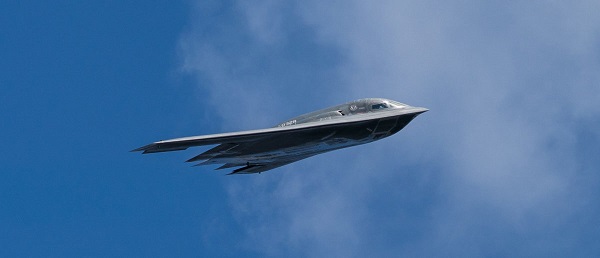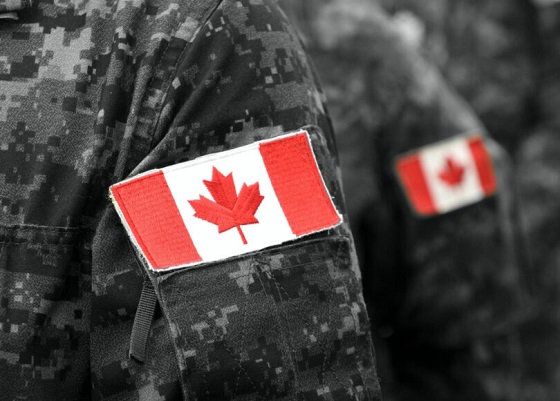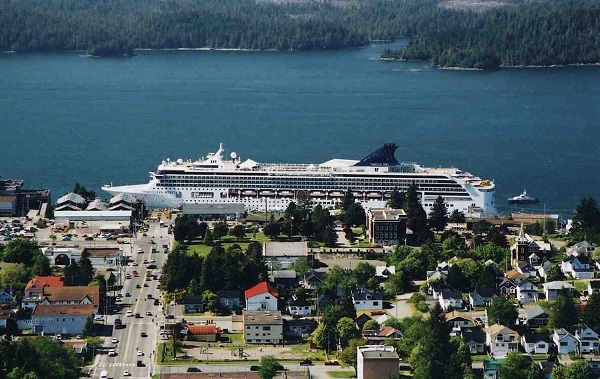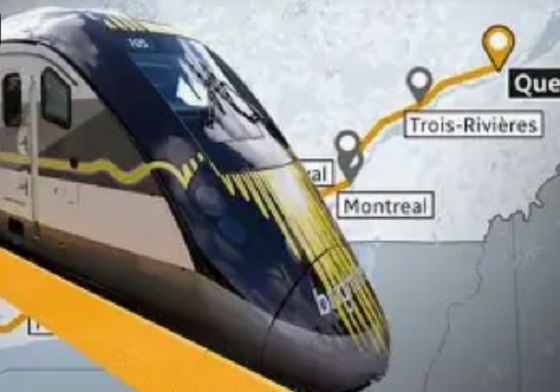armed forces
While war rages in the Middle East and Europe, Canada’s military is less capable than ever

From the MacDonald Laurier Institute
By Richard Shimooka
There are no good solutions to this problem, only less bad alternatives.
Over a decade ago, I had the opportunity to interview Jim Judd, the former deputy minister of national defence. After all these years, one quote still sticks out to me:
People assume because DND has 60,000 personnel and a budget of 12 billion dollars it should be able to do something, but there are quite severe practical limitations to its capability. In my view, it was not all that well understood outside of military circles.
Judd’s comment seems even more relevant today than it was eleven years ago. The ongoing Russian war in Ukraine, Chinese aggression in the West Pacific, and now the brutal incursion by Hamas into Israel from Gaza have stripped away any facade that the international system will be more peaceful or stable than in the 20th century. For most major liberal democracies, these events have shaken the complacency that has prevailed since the end of the Cold War: that is except for Canada. The recent announcement that the defence department will need to shoulder a $1 billion dollar budget cut over the next three years clearly illustrates the lack of awareness of this government on the international moment.
Yet, like Judd’s comment, there is little understanding amongst the public of how the military functions, and the consequences of these cuts are critical. While many may be dimly aware that the armed forces are facing a challenging situation, the actual details and the future outcome are only known to a precious few. This article will try to address that.
What will become apparent is that political decisions have simultaneously over-deployed the Canadian Armed Forces (CAF) while neglecting to invest in its capabilities. This has upset the fragile sustainment system, leaving its actual operational capability in tatters. The military has become a token force abroad and is even unlikely to be able to provide for Canada’s own defence in the near future. What follows is not a worse-case scenario, but the most likely outcome given the present situation and future trends.
The first step is to understand the aims of the CAF and how it is structured to achieve them. With the exception of the CF-18’s tactical fighter fleet’s continental defence mission, much of the CAF’s active duty military is organized to undertake expeditionary operations abroad. This should not be surprising. Other than the airborne threat of Russian aircraft, there are very limited direct naval and land threats to Canada. Most operations are abroad. Yet units are not able to deploy indefinitely—personnel need rotation home for rest, while equipment needs time for maintenance and overhaul. Furthermore, they require time to undertake personal development training as well as building up their forces prior to deployment.
In order to sustain units in the field the CAF employs something known as the “managed readiness system.” Essentially the system rotates units between deployment, recuperation, and training. This usually means a 1/3 ratio: for every one unit deployed into the field, two are in the other phases of a cycle. This isn’t a universal ratio: the Army’s field units can operate between a 1/2 to 1/4 ratio, the Navy’s frigates cycle is closer to 1/3.5 in practice, and submarines are 1/4 (this is largely due to the greater maintenance requirements these vessels require in order to operate safely). This was a major consideration for acquiring the four Victoria class submarines from the United Kingdom in the 1990s as it would ensure in practice that one would always be available for operation.
Tactical fighters operate differently, but a 1/4 ratio roughly captures the size of the fleet required to keep a sizeable force available for operations. Furthermore, as equipment ages, they also require more time and effort to maintain and overhaul.
In practical terms, the CAF’s objectives since the end of the Cold War have been to sustain four frigates for deployment, 18 CF-18 fighter jets for peacetime operations (12 on alert in Canada and six abroad for NATO), and a half brigade’s worth of soldiers (2000-2500) with ancillary capabilities. Among Western states, this is a fairly small contribution. For example, the United Kingdom, with only 30 percent greater GDP than Canada, potentially can sustain three brigades, totalling over 10,000 soldiers in the field that are able to fight in very high-intensity environments.
As we’re about to see, Canada falls far short of even its modest objectives, with the gap widening for the foreseeable future.
In the eight years since the Trudeau Government assumed office, two broad trends have been discernible. The first is an expanded international vision for the CAF, with large deployments in Europe and the Middle East, as well as a more active naval and air presence in the Pacific. This, as well as increased maintenance requirements for an aging equipment base, are the major cost drivers for the CAF. At the same time, while Canada’s defence policy, Strong, Secure, Engaged, promised a fully funded and structured recapitalization of the military, it has not been delivered—even within two years of the document’s promulgation, National Defence had already failed to spend $8 billion dollars budgeted to it. Thus, overuse tied with undercapitalization has resulted in the entire range of operational capabilities deteriorating over the past decade. Some modestly so, others much more drastically.
Navy
Let’s start with the Navy. For much of the 2000s, the twelve Halifax Class frigates were run hard to meet various commitments after 9/11. Now reaching thirty years of age, these vessels have undergone excessive levels of service and are showing their age. The foremost example is the HMCS Toronto, which has been undergoing refit since 2022. It has severe hull corrosion which has left her in a dilapidated state and may require hundreds of millions of dollars in repairs. The vastly increased maintenance requirements are visible across the class. In 2002 each Halifax class frigates’ docking work period (DWP) required around 200,000 man-hours to complete. Current DWPs now average 1.2 million hours, and will likely reach 1.5 million by the end of the decade. This translates into a significant cost increase and affects ship availability. With these constraints, the original objective of four vessels operational at any one time is completely unachievable: Canada at present effectively has only two frigates (with a third potentially available in some instances), which will become increasingly difficult to sustain in the coming years.
Canada’s submarines are in a similar shape. The grounding of the HMCS Corner Brook in 2011, and its subsequent dockyard accident in 2020, has effectively left the fleet with only three submarines in the managed readiness system, often leaving none available for operations. With fewer deployment opportunities, crew regeneration has suffered, damaging the remaining personnel morale and impacting the skill base that is critical for operating such a highly complex capability.
Army
The Army is not in much better shape, although its challenges are somewhat different from the other services. The expansion of the Latvia mission to approximately 2,000 soldiers will effectively utilize the vast majority of the units available at any given time through managed readiness. However the demands, like during the Afghanistan era, will stretch the system and have a number of negative consequences. The first is whether the mission can be sustained for more than two years—there simply are not enough soldiers available in the coming years given the ongoing personnel shortages.
Another almost certain consequence will be the curtailment of unit training across the Army, as there will be fewer personnel available. This places troops at greater risk even for a peacetime operation like in Latvia. Russia has continually targeted Canadian soldiers with active measures campaigns to discredit their presence in the country, something that requires training and vigilance to avoid. This also ignores that the CAF will not deploy to Latvia with many basic capabilities, such as ambulances and air defence systems that can defend against UAVs or mobile artillery, all of which are basic capabilities for operating in a war today.
These issues are compounded by the increasing number of domestic operations surrounding disaster relief the Army has been tasked with, such as helping to deal with the wildfires that raged this past summer. While these are generally handled by the reserves, the growing scale of these events, as well as the tendency to use the military as the force of first resort in these cases, is further straining its already weakened force generation system.
Air Force
Perhaps the most precipitous decline is with the RCAF’s tactical fighter fleet of CF-18s. Canada is currently in the process of shrinking its fleet to 37 aircraft while preparing for the transition to the F-35. The fleet size is sufficient only to sustain domestic NORAD operations, a reality underlined by the announcement last December that the RCAF would withdraw from NATO commitments for the foreseeable future. Even more problematic is the lack of pilots and support personnel, which may even lead to the Air Force being unable to fulfill the NORAD alert mission requirements in full. As the F-35 transition gets underway in the coming years, there are fears that there will be insufficient personnel to staff both aircraft types, which will likely result in fewer available CF-18s to meet the alert role.
The state of the tactical fighter fleet can be directly attributed to the Liberal government’s decision to scrap the acquisition of the F-35 in 2015. While some suggested the competition “built trust” and confidence for the decision, the process essentially wrecked the ability of the Air Force to provide even the most basic level of security for the country. Even more ironic was that the government tried to implement an end-run around a competition through the interim buy of 18 F/A-18E/F Super Hornets, justified by the need to meet both the NORAD and NATO missions simultaneously. Now, seven years later, Canada has effectively ended one mission and faces the possibility that it will not even be able to meet its most basic mission of defending the country’s airspace.
Solutions
So, what can be done? Unfortunately, there are no good outcomes for the government, only less bad alternatives. Avoiding the worst-case scenario will require multiple lines of effort. Overall it requires the forces to reduce its overseas commitments while trying to revitalize its standing forces by accelerating modernization and recruitment.
The first step is to approach the United States and close allies and frankly acknowledge the situation the government has placed itself in. To some degree, they are already aware: recent moves like the exclusion of AUKUS and the U.K.’s offer to assist in arctic security implicitly recognize Canada’s weakness. However, to reconstitute the military effectively will require the CAF to withdraw from some of its long-standing commitments. For example, it is questionable whether the Latvia expansion is responsible given the state of the Army. There is a high probability that the mission’s demands are unsustainable in the long run, to the point where CAF will have to withdraw significant portions of its commitment to the Baltics or risk a collapse of its managed readiness system. Maintaining the operation’s present size and/or undertaking shorter periodic deployments of units are much more achievable alternatives given the current constraints.
Of primary importance, though, is that the personnel and procurement systems require reforms. Pouring more money and resources into the present systems is like pouring water into a bucket with holes. The holes must be plugged before anything else can proceed. Both systems must address the new realities in their respective areas, which will require substantial changes to how the government operates. Once this is accomplished, raising funding levels that meet the NATO two percent of GDP threshold will be critical—there are far too many deferred maintenance and procurements programs that need to be addressed immediately if the CAF wants to remain viable.
Finally, budget certainty is essential. Cutting a billion in funding and delaying implementation of Strong, Secure, Engaged further undercuts the military’s state. Unpredictable budget environments are a prime cause of delays and larger cost overruns, both on procurement projects and for operations—issues that the CAF and Canada cannot afford anymore.
The current situation was utterly predictable even seven years ago. Now that the country is in this quagmire, it will require a herculean effort to get out of it.
Richard Shimooka is a Hub contributing writer and a senior fellow at the Macdonald-Laurier Institute who writes on defence policy.
armed forces
Global Military Industrial Complex Has Never Had It So Good, New Report Finds


From the Daily Caller News Foundation
The global war business scored record revenues in 2024 amid multiple protracted proxy conflicts across the world, according to a new industry analysis released on Monday.
The top 100 arms manufacturers in the world raked in $679 billion in revenue in 2024, up 5.9% from the year prior, according to a new Stockholm International Peace Research Institute (SIPRI) study. The figure marks the highest ever revenue for manufacturers recorded by SIPRI as the group credits major conflicts for supplying the large appetite for arms around the world.
“The rise in the total arms revenues of the Top 100 in 2024 was mostly due to overall increases in the arms revenues of companies based in Europe and the United States,” SIPRI said in their report. “There were year-on-year increases in all the geographical areas covered by the ranking apart from Asia and Oceania, which saw a slight decrease, largely as a result of a notable drop in the total arms revenues of Chinese companies.”
Notably, Chinese arms manufacturers saw a large drop in reported revenues, declining 10% from 2023 to 2024, according to SIPRI. Just off China’s shores, Japan’s arms industry saw the largest single year-over-year increase in revenue of all regions measured, jumping 40% from 2023 to 2024.
American companies dominate the top of the list, which measures individual companies’ revenue, with Lockheed Martin taking the top spot with $64,650,000,000 of arms revenue in 2024, according to the report. Raytheon Technologies, Northrop Grumman and BAE Systems follow shortly after in revenue,
The Czechoslovak Group recorded the single largest jump in year-on-year revenue from 2023 to 2024, increasing its haul by 193%, according to SIPRI. The increase is largely driven by their crucial role in supplying arms and ammunition to Ukraine.
The Pentagon contracted one of the group’s subsidiaries in August to build a new ammo plant in the U.S. to replenish artillery shell stockpiles drained by U.S. aid to Ukraine.
“In 2024 the growing demand for military equipment around the world, primarily linked to rising geopolitical tensions, accelerated the increase in total Top 100 arms revenues seen in 2023,” the report reads. “More than three quarters of companies in the Top 100 (77 companies) increased their arms revenues in 2024, with 42 reporting at least double-digit percentage growth.”
armed forces
Carney’s ‘Shared Sacrifice’ Is a Lie. Only Veterans Are Bleeding for This Budget

How the 2025 Federal Budget Demands More From Those Who’ve Already Given Everything
I’ve lived the word sacrifice.
Not the political kind that comes in speeches and press releases the real kind. The kind Mark Carney wouldn’t know if it slapped him in the face. The kind that costs sleep, sanity, blood. I’ve watched friends trade comfort for duty, and I’ve watched some of them leave in body bags while the rest of us carried the weight of their absence. So when the Prime Minister stood up this year and told Canadians the new budget would “require sacrifice,” I felt that familiar tightening in the gut the one every veteran knows. You brace for impact. You hope the pain lands in a place that makes sense.
It didn’t.
Kelsi Sheren is a reader-supported publication.
To receive new posts and support my work, consider becoming a free or paid subscriber.
Six months into Mark Carney’s limp imitation of leadership, it’s painfully clear who’s actually paying the bill. The 2025 budget somehow managing to bleed the country dry while still projecting a $78-billion deficit shields the political class, funnels money toward his network of insiders, and then quietly hacks away at the one department that should be sacrosanct: Veterans Affairs Canada.
If there’s one group that’s earned the right to be spared from government-imposed scarcity, it’s the people who carried this country’s flag into danger. Veterans don’t “symbolize” sacrifice they embody it on the daily And when Ottawa tightens the belt on VAC, the consequences aren’t abstract. They’re brutal and direct, causing nothing but more death and destruction. But Mark Carney doesn’t lose sleep over veterans killing themselves.
Punishment disguised as budgeting for a veteran means the difference between keeping a roof or sleeping in a truck. Punishment disguised as budgeting means PTSD left untreated until it turns a human being into another suicide statistic. Punishment disguised as budgeting means a veteran choosing between groceries and medication because some number-shuffler in Ottawa wants to pretend they’re being “responsible.”
This isn’t fiscal restraint it’s political betrayal wrapped in government stationery. Ottawa sells it as hard choices, but the hardness always falls on the backs of the same people: the ones who already paid more than their share, the ones who can’t afford another hit. Carney and his cabinet won’t feel a thing. Not one missed meal. Not one sleepless night. Not one flashback.
But the men and women who already paid in flesh? They’re the ones being told to give more.
That’s not sacrifice.
That’s abandonment dressed up as fiscal policy.
And Canadians need to recognize it for what it is a government that demands loyalty while refusing to give any in return. The fine print in the government’s own documents reveals what the slogans won’t.
Over the next two years, VAC plans to cut $2.227 billion from its “Benefits, Services and Support” programs. [2] Broader “savings initiatives” reach $4.4 billion over four years, much of it through reductions to the medical-cannabis program that thousands of veterans rely on to manage chronic pain and PTSD. [3] Independent analysts estimate yearly losses of roughly $900 million once the cuts are fully implemented. [4]
To put that in perspective: no other department is seeing reductions on this scale. Not Defence, not Infrastructure, not the Prime Minister’s Office thats for damn sure. Only the people who’ve already paid their debt to this country are being asked to give again.
The government’s line is tidy: “We’re not cutting services we’re modernizing. Artificial Intelligence will streamline processing and improve efficiency.”
That sounds fine until you read the departmental notes. The “modernization” translates into fewer human case managers, longer waits, and narrower eligibility. It’s austerity dressed up as innovation. I’ve coached veterans through the system. They don’t need algorithms; they need advocates who understand trauma, identity loss, and the grind of reintegration. They need empathy, not automation.
This isn’t abstract accounting. Behind every dollar is a life on the edge, the human cost and toll is very real.
- Homelessness: Veterans make up a disproportionate number of Canada’s homeless population. Cutting benefits only deepens that crisis.
- Mental Health: Parliament’s ongoing study on veteran suicide shows rising rates of despair linked to delays and denials in VAC services. [5] Knowing MAID for mental illness alone in 2027 will take out a significant amount of us.
- Food Insecurity: A 2024 VAC survey found nearly one in four veterans reported struggling to afford basic groceries. That’s before these cuts.
We talk about “service” like it ends with deployment. It doesn’t. Service continues in how a nation cares for those who carried its battles, and this doesn’t include the cannabis cut to medication or the fight’s we have to fight when they tell us our injuries are “not service related”
The insult is magnified by the timing. These cuts were announced just days before November 11 Remembrance Day, when Canadians bow their heads and say, “We will remember them.”
Apparently, the government remembered to draft the talking points but forgot the meaning behind them, not a single one of the liberal government should have been allowed to show their faces to veteran’s or at a ceremony. They’re nothing but liars, grifters and traitors to this nation. Yes I’m talking about Jill McKnight and Mark Carney.
The budget still runs the second-largest deficit in Canadian history. [6]
Veteran cuts don’t fix that. They barely dent it. What they do is let the government say it’s “finding efficiencies” while avoiding the real structural overspending that created the problem in the first place. When a government chooses to protect its pet projects and insider contracts while pulling support from veterans, that’s not fiscal discipline it’s moral cowardice. The worst part is that This isn’t an isolated move. It fits a six-month pattern: large, attention-grabbing announcements about “reform,” followed by fine print that concentrates power and shifts burden downward. Veterans just happen to be the first visible casualty.
The same budget expands spending in other politically convenient areas green-transition subsidies, digital-governance infrastructure, and administration while the people who once embodied service are told to tighten their belts.
As a combat veteran, I know what it’s like to come home and realize that the fight didn’t end overseas it just changed terrain. We fought for freedom abroad only to watch bureaucratic neglect wage a quieter war here at home. Veterans don’t ask for privilege. They ask for respect, for competence, for follow-through on the promises this country made when it sent them into harm’s way.
Here’s what really needs to change, the liberal government has to go, thats step one. Restore VAC funding immediately. Any “savings” plan that touches benefits, services, or support should be scrapped. End the AI façade. Efficiency can’t replace empathy. Keep human case workers who understand the veteran experience. Audit and transparency. Publish a detailed breakdown of where VAC funds are cut and who approved it. Canadians deserve to see the receipts. National accountability. Every MP who voted for this budget should face veterans in their constituency and explain it, face-to-face.
Budgets are moral documents. They show what a country values. By slashing VAC while running record deficits, this government declared that veterans are expendable line items, not national obligations. The Prime Minister promised “shared sacrifice.” But the only people truly sacrificing are the ones who already gave more than most Canadians ever will.
Sacrifice isn’t about spreadsheets; it’s about service. It’s what every veteran understood when they raised their right hand. This government’s brand of sacrifice asking wounded soldiers to pay for political mismanagement isn’t austerity. It’s abandonment.
Canada owes its veterans more than a wreath once a year. It owes them respect written into every budget, not erased from it.
KELSI SHEREN
Footnotes
[1] The Guardian, “Canada’s 2025 Federal Budget Adds Tens of Billions to Deficit as Carney Spends to Dampen Tariffs Effect,” Nov 5 2025.
[2] True North Wire, “Liberal Budget to Cut $4.23 Billion from Veterans Affairs,” Nov 2025.
[3] StratCann, “Budget 2025 Includes Goal of Saving $4.4 Billion in Medical Cannabis Benefits,” Nov 2025.
[4] Canadian Centre for Policy Alternatives, “Where Will the Federal Government Cut to Pay for Military Spending and Tax Cuts?” Nov 2025.
[5] House of Commons Standing Committee on Veterans Affairs, “Study on Veteran Suicide and Sanctuary Trauma,” ongoing 2025.
[6] CBC News, “Federal Budget 2025 Deficit Second Largest in Canadian History,” Nov 2025.
Kelsi Sheren is a reader-supported publication.
To receive new posts and support my work, consider becoming a free or paid subscriber.
-

 Alberta1 day ago
Alberta1 day agoThe Recall Trap: 21 Alberta MLA’s face recall petitions
-

 International1 day ago
International1 day agoTyler Robinson shows no remorse in first court appearance for Kirk assassination
-

 Energy1 day ago
Energy1 day agoCanada’s future prosperity runs through the northwest coast
-

 illegal immigration1 day ago
illegal immigration1 day agoUS Notes 2.5 million illegals out and counting
-

 Business2 days ago
Business2 days agoHigh-speed rail between Toronto and Quebec City a costly boondoggle for Canadian taxpayers
-

 Business2 days ago
Business2 days agoThe world is no longer buying a transition to “something else” without defining what that is
-

 2025 Federal Election2 days ago
2025 Federal Election2 days agoToo Close for Comfort: Carney Floor Crosser Comes From a Riding Tainted by PRC Interference
-

 Daily Caller19 hours ago
Daily Caller19 hours ago‘There Will Be Very Serious Retaliation’: Two American Servicemen, Interpreter Killed In Syrian Attack










